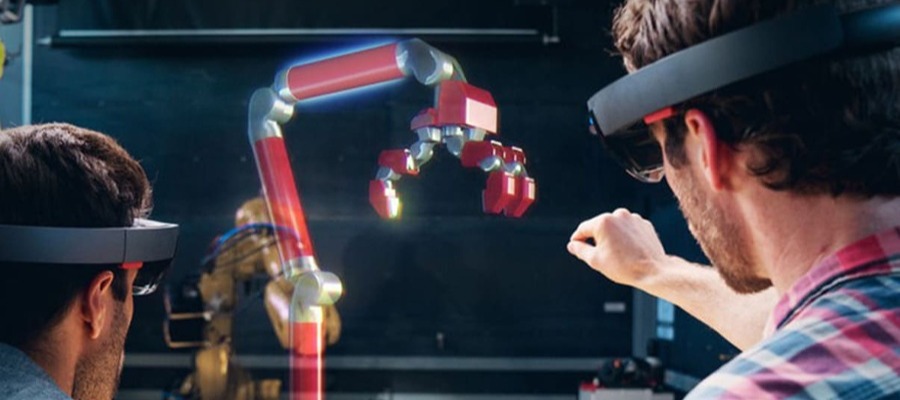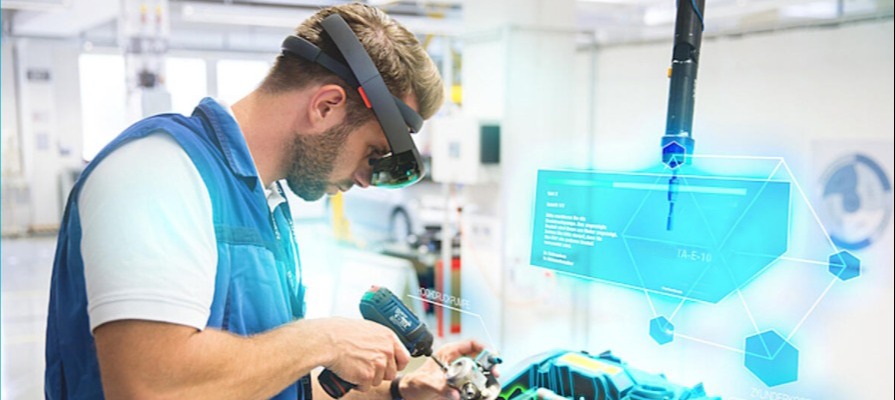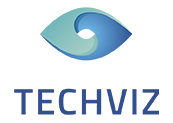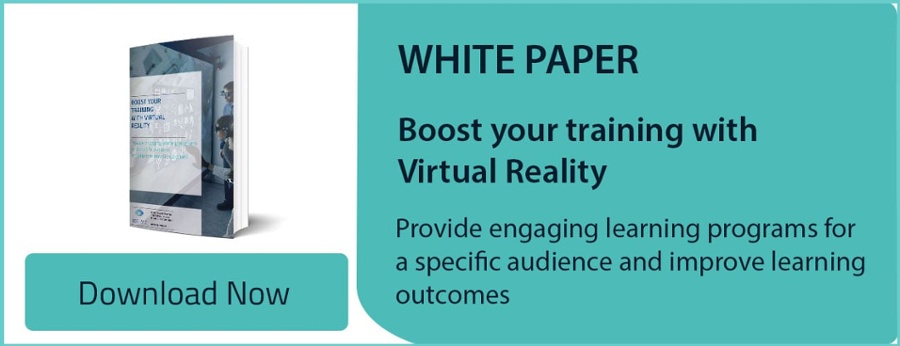
Imagine that you are in the market for a new equipment, but instead of looking into catalogues or websites, you want to see how it fits in your workplace. Layering virtual objects and other digital mediums into our daily lives can sound like something out of a Science Fiction movie. But with smartphones and other devices becoming a huge part of our daily lives, Augmented Reality (AR) has already changed our daily lives, and our businesses.
Augmented Reality has yet to reach its full bloom, but according to Digi-Capital’s recent report, AR software can reach up to $90 billion within 5 years. AR for business offers many possibilities to industries, far more than just enhanced customer-relationship, as it revolutionizes the way you interact with suppliers, coworkers and prospects.
From having a better collaboration to improve processes on product development, to hiring and training workers remotely, , AR will get everywhere. So, how about your business?
AR for business: what are we talking about?
Augmented reality is the integration of digital information in the real world. Through display devices such as virtual and augmented headsets, or simply with a smartphone, AR technologies blends your perception of the real world with digital content that was computer-generated. Unlike Virtual Reality (VR), Augmented Reality does not create whole virtual worlds, but appears in an existing environment: ours.
Augmented Reality has 3 characteristics:
- It combines the real world with virtual data in real time: nothing is pre-calculated
- It interacts simultaneously with the user and the real world: one interaction or move in the real world leads to an adjustment of the layer of data
- It relies on an (immersive) 3D environment (because we live in a multimodal world)

People and objects are always surrounded by data. Augmented Reality can display collected data to the user through graphics, sounds, haptics… and bring you added value. For instance, when targeting the equipment in a factory, they can get information about how much they are used, or if they should schedule for a maintenance soon. Or by layering the “real” object with the virtual one, you can check whether a product complies with the specifications (size, design, shape…). By providing new information, AR applications enhance your experience of the real world.
How does augmented reality work?
Augmented Reality can be displayed in a lot of devices: smartphone, tablets, glasses, AR/VR headsets… For industrial use, we recommend the use of augmented reality headsets, such as Microsoft Hololens, as you can use your 3D visualization software with your hands free, which is crucial for precise interaction such as designing a product or performing an AR VR maintenance.
There are different methods to create an AR system in a professional environment:
- Market-based AR: also called image recognition, it requires the user to scan a sign or a QR-Code with a camera. In some cases, the AR application also calculates the position and orientation of a marker to position the 3D model.
- Markerless AR: also called location-based or position-based augmented reality, it displays the AR content depending on the user’s position.
- Projection-based AR: the projection device projects light on certain surfaces but does not always allow interactions. They are basically the holograms we have all seen in Sci-Fi movies.
- Superimposition-based AR: the original view is partially or fully replaced by 3D objects. Object recognition plays a major role in this technology. For example it can be used for a catalogue app that allows to place virtual objects in a room.
What are 5 main Use Cases for AR in business?
1. Aerospace industry
Aeronautics is a complex and demanding field, from both the design-to-market and maintenance processes. A great use case for augmented reality in aeronautics is maintenance. Nowadays, technicians need to be highly specialized, depending on the specific aircraft and system to maintain, as well as their bespoke adaptations. AR can provide operators with AR VR Maintenance Manuals that can:
- Display concretely where the parts to maintain are on the plane
- Provide with a step-by-step virtual assembly process with CAD models superimposition in AR
- Check the procedures the technician is doing with a body tracking software
- Connect with other experts through an AR remote assistance software
All these elements can also be repurposed as a mean to train the operators in real time.
2. Navigation use case
This use case can be used in B2B as well as B2C scenarios. The idea is to use an AR remote assistance software to track the surroundings of a vehicle, and display important information to the driver’s windshield:
- Static GPS data
- Direction arrows added dynamically
- Reading of road signs
- Rear camera with the vehicle’s direction preview
![]()
At TechViz, we already worked on a similar project involving the use of VR finger tracking to track the movements of a driver on a virtual dashboard, in order to check accessibility. Users can look at their virtual hands to react as they do in reality. It also provides means to ‘touch’ and interact with virtual objects more easily – while being immersed in AR or VR.
3. Construction Industry
The benefits of the use of Building Information Modelling (BIM) data by viewing CAD models in AR/VR have been widely publicized. But how about taking it a step further by mixing the virtual information with the real environment? By using an AR display device (most likely a smartphone, a tablet or a HMD) on site can help the workers visualize:
- Where the construction process should take place (for instance by visualizing the pipe system under the pavement)
- Where the future installation will take place
4. Education and training use cases
AR and VR have similar positive effects on the learning process: courses are more interactive and fun, the learners are more attentive and motivated by the courses and they can experiment with the materials and learn at their own pace.
TechViz AR and VR software is already used in many universities, for instance to address different kind of audiences and solve many issues related to knowledge transfer by:
- Making AR/VR technologies accessible to the students and the university partners
- Giving a better visibility to research subjects
- Using AR/VR to remove language barriers
5. Healthcare industry
An augmented reality system provides the medical personnel (doctors, surgeons, nurses…) with a computer-processed imaging data in real time. For example, it can superimpose a CG image on a patient to track where the veins and muscles are located, to make the medical intervention easier. Several AR VR collaboration platforms using an HMD have already been developed with success, one of the current limits being that not enough data was collected to create most of the 3D reconstruction of medical images needed by practicians.
We presented 5 main use case, but there are many other sectors that can benefit from Augmented Reality. If you have identified a way in which AR can benefit your business: you have made a giant step. The next one is to find the best approach to start using augmented reality in your company. Depending on your use case, the choice of AR hardware (AR glasses, HMD or just a smartphone) and software (CATIA, Creo, PTC, NX…) can be tough to make. Our commercial team is always available to discuss such opportunities with you. Don’t hesitate to contact us!






 Back to Blog
Back to Blog




